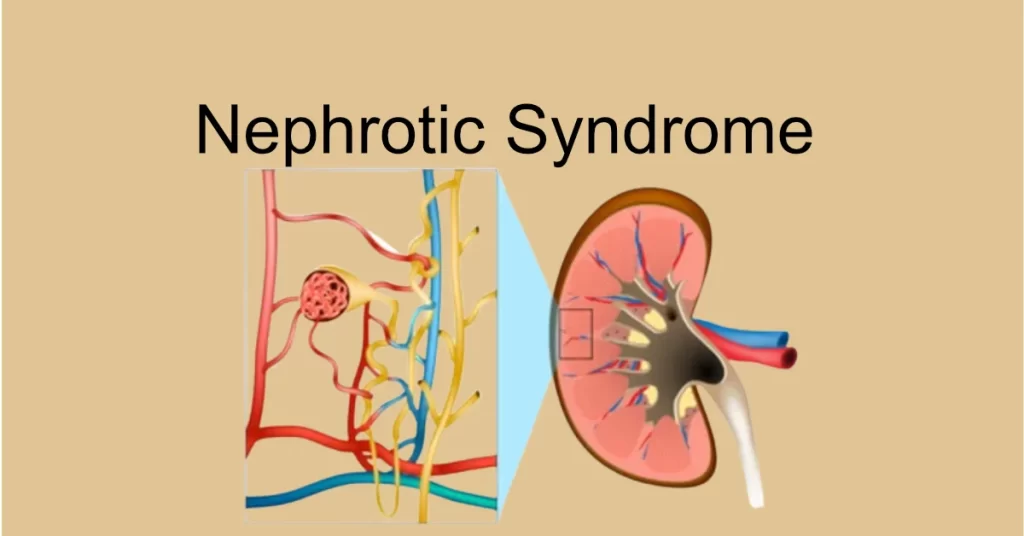Understanding Nephrotic Syndrome

Nephrotic syndrome is a rare and complex disorder affecting the kidneys. This blog aims to provide a comprehensive guide to the epidemiology, pathophysiology, classification, genetic forms, causes, clinical features, management, complications, and prognosis of nephrotic syndrome.
Introduction: Nephrotic syndrome is a rare kidney disorder that affects both children and adults, characterized by the presence of high levels of protein in the urine, low levels of protein in the blood, high cholesterol levels, and swelling of the body. This disorder can be caused by various underlying conditions such as autoimmune diseases, infections, and genetic mutations. In this blog, we will explore the different aspects of nephrotic syndrome and provide a detailed understanding of this complex disorder.
Epidemiology: Nephrotic syndrome is a rare disorder, affecting approximately 16 per 100,000 people worldwide. It is more common in children than in adults, with a peak incidence between the ages of 2-6 years. Boys are affected more frequently than girls. The incidence and prevalence of nephrotic syndrome vary across different regions of the world.
Pathophysiology: Nephrotic syndrome is a result of damage to the glomeruli, the tiny blood vessels in the kidneys responsible for filtering waste from the blood. The damage can be caused by various underlying conditions such as autoimmune diseases, infections, and genetic mutations. This damage leads to an increase in the permeability of the glomeruli, allowing large amounts of protein to leak into the urine.
Classification: Nephrotic syndrome can be classified into various types based on the underlying cause, histopathology, and response to treatment. The most common type is primary nephrotic syndrome, which is idiopathic and not associated with any underlying disease. Secondary nephrotic syndrome is associated with underlying conditions such as lupus, diabetes, and infections.
Genetic Forms of Nephrotic Syndrome: Some cases of nephrotic syndrome are caused by genetic mutations. These genetic forms of nephrotic syndrome can be inherited in an autosomal dominant, autosomal recessive, or X-linked manner. Mutations in genes such as NPHS1, NPHS2, WT1, and PLCE1 have been identified in patients with genetic nephrotic syndrome.
Causes of Nephrotic Syndrome: Nephrotic syndrome can be caused by various underlying conditions such as autoimmune diseases, infections, and genetic mutations. Some of the common causes of nephrotic syndrome include minimal change disease, focal segmental glomerulosclerosis, membranous nephropathy, lupus nephritis, and diabetic nephropathy.
Clinical Features: The clinical features of nephrotic syndrome include edema, proteinuria, hypoalbuminemia, and hyperlipidemia. Edema usually occurs in the face, legs, and abdomen. Proteinuria is characterized by the presence of high levels of protein in the urine, which can be detected through a urine test. Hypoalbuminemia is low levels of albumin in the blood, which can lead to fluid accumulation in the body. Hyperlipidemia is the presence of high levels of cholesterol and triglycerides in the blood.
- Nonspecific complaints, including headache, irritability, malaise, and fatigue are common at presentation.
Investigations: Serum proteins — Hypoalbuminemia is one of the criteria that defines nephrotic syndrome. The serum albumin is typically below 3 g/dL (30 g/L) and can be as low as 1 g/dL (10 g/L).
- Lipid profile
- FBP — Hb and hematocrit may be increased in children with nephrotic syndrome, particularly MCD, as a result of plasma volume contraction. Thrombocytosis is common. Hemoconcentration and thrombocytosis may contribute to hypercoagulability and thrombotic complications.
- Electrolytes: May be hyponatremic
- Urinalysis first morning void to measure urinary protein to creatinine ratio.
- Renal function test
- Other blood tests include antinuclear antibody level for patients ≥ 10 years of age or with signs of systemic lupus erythematosus, and serology for hepatitis B, C, and HIV in high-risk populations
- Renal biopsy for children ≥12 years of age
A presumptive diagnosis of minimal change disease (MCD) can be made based upon clinical findings. Factors for presumptive diagnosis:
- Age younger than six years of age
- Absence of hypertension
- Absence of hematuria by Addis count
- Normal complement levels
- Normal renal function
- Plus > 90% response to glucocorticoid therapy within 8 weeks of therapy
Differential diagnosis:
- Heart failure
- Other causes of hypoalbuminemia, such as protein losing enteropathy or protein malnutrition (kwashiorkor). Hypoalbuminemia is also present in children with cirrhosis but the main cause of fluid retention is portal hypertension.
- Increased capillary permeability due to an allergic reaction or hereditary angioedema. The edema in this setting is typically focal.
Note: Nephrotic syndrome is distinguished from these causes of edema by the presence of nephrotic range proteinuria >50 mg/kg per day and hypoalbuminemia <3 g/dL (30g/L).
Management: The management of nephrotic syndrome involves treating the underlying cause, reducing proteinuria, and managing the symptoms. Treatment options include corticosteroids, immunosuppressive drugs, and diuretics. In some cases, kidney transplant may be necessary.
There is a role of supportive treatment in nephrotic syndrome including;
- Diet: Sodium restricted diet-while a patient is edematous and until proteinuria remits. Thereafter, a normal diet can be followed. Protein restriction is not indicated, except in cases of acute or chronic kidney failure when severe azotemia is present and, even then, protein restriction should be done carefully as to avoid impaired somatic growth.
- Bed rest.
Complications: Nephrotic syndrome can lead to various complications such as infections, blood clots, and chronic kidney disease. Infections can occur due to a weakened immune system as a result of the disorder or the use of immunosuppressive drugs. Blood clots can occur due to the presence of high levels of cholesterol and triglycerides in the blood. Chronic kidney disease can develop if the disorder is not managed properly.
Due to long term use of corticosteroid use in management of nephrotic syndrome the following are the side effects:
- Growth impairment
- Cataracts
- Weight gain
- Osteoporosis
- Immunosuppression
- Hypertension
- Hyperglycemia
- Myopathy
- Gastritis
- Peptic ulcer
Prognosis: The prognosis of nephrotic syndrome depends on the underlying cause, response to treatment, and the presence of complications. With propermanagement, most patients with nephrotic syndrome can lead a normal life. However, some cases may progress to chronic kidney disease, requiring dialysis or kidney transplant.
In conclusion, nephrotic syndrome is a rare and complex disorder that affects the kidneys. Understanding the epidemiology, pathophysiology, classification, genetic forms, causes, clinical features, management, complications, and prognosis of nephrotic syndrome is crucial for proper diagnosis and management of this disorder. If you or someone you know is experiencing the symptoms of nephrotic syndrome, it is important to seek medical attention promptly






Responses